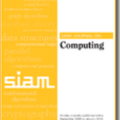Dell, Lapinskas and Meeks [DLM SICOMP 2022] presented a general reduction from approximate counting to decision for a class of fine-grained problems that can be viewed as hyperedge counting or detection problems in an implicit hypergraph, thus obtaining tight equivalences between approximate counting and decision for many key problems such as $k$-clique, $k$-sum and more. Their result is a reduction from approximately counting the number of hyperedges in an implicit $k$-partite hypergraph to a polylogarithmic number of calls to a hyperedge oracle that returns whether a given subhypergraph contains an edge. The main result of this paper is a generalization of the DLM result for {\em output-sensitive} approximate counting, where the running time of the desired counting algorithm is inversely proportional to the number of witnesses. Our theorem is a reduction from approximately counting the (unknown) number of hyperedges in an implicit $k$-partite hypergraph to a polylogarithmic number of calls to a hyperedge oracle called only on subhypergraphs with a small ``measure''. If a subhypergraph has $u_i$ nodes in the $i$th node partition of the $k$-partite hypergraph, then its measure is $\prod_i u_i$. Using the new general reduction and by efficiently implementing measure-bounded colorful independence oracles, we obtain new improved output-sensitive approximate counting algorithms for $k$-clique, $k$-dominating set and $k$-sum. In graphs with $n^t$ $k$-cliques, for instance, our algorithm $(1\pm \epsilon)$-approximates the $k$-clique count in time $$\tilde{O}_\epsilon(n^{\omega(\frac{k-t-1}{3},\frac{k-t}{3},\frac{k-t+2}{3}) }+n^2),$$ where $\omega(a,b,c)$ is the exponent of $n^a\times n^b$ by $n^b\times n^c$ matrix multiplication. For large $k$ and $t>2$, this is a substantial improvement over prior work, even if $\omega=2$.
翻译:暂无翻译




